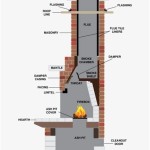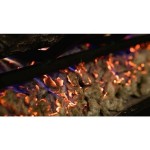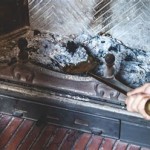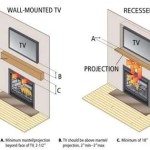Ventless Gas Fireplaces: A Comprehensive Overview
Ventless gas fireplaces, also known as vent-free gas fireplaces, offer a convenient and aesthetically pleasing heating solution for homes and other spaces. Unlike traditional fireplaces that require a chimney or venting system to expel combustion byproducts, ventless models are designed to operate without external ventilation. This characteristic presents unique advantages and disadvantages that merit careful consideration before installation.
The core principle behind a ventless gas fireplace lies in its highly efficient combustion process. These units are engineered to burn natural gas or propane so cleanly that the resulting emissions, primarily carbon dioxide and water vapor, are considered safe for indoor release within certain limits. To ensure safety, ventless fireplaces are equipped with oxygen depletion sensors (ODS) that continuously monitor the oxygen levels in the room. If the oxygen level drops below a predetermined threshold, the ODS will automatically shut off the gas supply, preventing the buildup of harmful carbon monoxide. This safety mechanism is a crucial component of ventless fireplace design and operation.
The absence of a venting system significantly simplifies installation. Ventless fireplaces can be installed in virtually any room where a gas line is accessible, without the need for extensive construction or modifications to the building's structure. This feature makes them particularly attractive for homeowners who want to add a fireplace to a space without the cost and complexity associated with installing a traditional vented fireplace.
However, the operation of ventless gas fireplaces is not without potential drawbacks. While they are designed to be safe, the release of combustion byproducts into the living space necessitates diligent adherence to manufacturer guidelines and safety precautions. Maintaining adequate ventilation, even with the fireplace running, is essential. Users must also understand the limitations of these units and the importance of regular maintenance to ensure their continued safe and efficient operation.
Key Advantages of Ventless Gas Fireplaces
Ventless gas fireplaces offer several distinct advantages that contribute to their popularity. These advantages range from ease of installation to energy efficiency and aesthetic appeal.
Ease of Installation: The most significant advantage of a ventless fireplace is the ease of installation. Because they do not require a chimney or venting system, they can be installed in almost any room with access to a gas line. This eliminates the need for costly and disruptive construction work, making them a more accessible option for many homeowners. Installation typically involves connecting the fireplace to the gas supply, ensuring the unit is level and stable, and following the manufacturer's instructions for initial startup and operation. Some models are even designed to be wall-mounted, further simplifying the installation process. This adaptability makes ventless fireplaces a suitable option for apartments, condos, and homes where installing a traditional fireplace is impractical or impossible.
Energy Efficiency: Ventless gas fireplaces are known for their high energy efficiency. Since no heat is lost through a chimney or vent, nearly 100% of the heat generated by the fireplace is released directly into the room. This makes them a cost-effective heating solution, particularly for supplemental heating purposes. In comparison, traditional vented fireplaces can lose a significant portion of their heat through the chimney, resulting in lower overall efficiency. The energy efficiency of ventless fireplaces can translate into lower heating bills, especially during periods of moderate cold when the central heating system may not be required. Furthermore, some models are equipped with thermostats that allow users to precisely control the temperature of the room, further optimizing energy consumption.
Aesthetic Appeal: Ventless gas fireplaces are available in a wide variety of styles and designs, allowing homeowners to select a unit that complements their existing décor. From traditional log sets to contemporary glass media options, there is a ventless fireplace to suit virtually any aesthetic preference. These fireplaces can serve as a focal point in a room, adding warmth and ambiance without the mess or inconvenience of a wood-burning fireplace. Many models also feature realistic flame patterns and adjustable flame heights, enhancing the visual appeal. The availability of different sizes and shapes ensures that a ventless fireplace can be incorporated into various room layouts and architectural styles. Moreover, some units come with decorative surrounds or mantels, providing a complete and stylish fireplace solution.
Potential Disadvantages and Safety Considerations
While ventless gas fireplaces offer numerous benefits, it is crucial to acknowledge their potential disadvantages and safety considerations. Understanding these aspects is essential for making an informed decision and ensuring the safe operation of the unit.
Indoor Air Quality: The primary concern associated with ventless gas fireplaces is the release of combustion byproducts into the indoor environment. Although these units are designed to burn fuel cleanly, they still produce carbon dioxide and water vapor. In poorly ventilated spaces, the accumulation of these byproducts can lead to increased humidity and potentially elevated levels of carbon dioxide. While the ODS system is designed to shut off the gas supply if oxygen levels drop too low, it is still important to maintain adequate ventilation to ensure good indoor air quality. Regularly opening windows or using exhaust fans can help to mitigate the buildup of combustion byproducts. Individuals with respiratory sensitivities, such as asthma or allergies, may be more susceptible to the effects of these byproducts and should exercise extra caution when using a ventless gas fireplace.
Moisture Levels: The combustion process in ventless gas fireplaces produces water vapor as a byproduct. In enclosed spaces, this can lead to increased humidity levels, which can contribute to the growth of mold and mildew. High humidity can also damage furniture, fabrics, and building materials. It is important to monitor humidity levels in the room where the ventless fireplace is operating and to take steps to control excess moisture. Dehumidifiers can be used to remove moisture from the air, and proper ventilation can help to reduce humidity buildup. Regular inspections for signs of mold or mildew are also recommended to prevent potential problems.
Carbon Monoxide Risk: Although ventless gas fireplaces are equipped with ODS systems to prevent carbon monoxide poisoning, it is still essential to have working carbon monoxide detectors installed in the home. These detectors will provide an additional layer of protection by alerting occupants to the presence of carbon monoxide, even if the ODS system fails to function properly. Carbon monoxide is a colorless, odorless, and tasteless gas that can be deadly. Regular testing of carbon monoxide detectors is crucial to ensure they are functioning correctly. It is also important to understand the symptoms of carbon monoxide poisoning, which can include headache, dizziness, nausea, and confusion. If anyone in the home experiences these symptoms, it is important to immediately evacuate the premises and seek medical attention.
Maintenance and Operational Best Practices
Proper maintenance and adherence to operational best practices are critical for ensuring the safe and efficient operation of a ventless gas fireplace. Regular maintenance can prolong the lifespan of the unit and prevent potential safety hazards.
Regular Cleaning: Cleaning the ventless gas fireplace regularly is essential for maintaining its performance and safety. The burner assembly should be cleaned periodically to remove dust, debris, and soot that can accumulate over time. A soft brush or vacuum cleaner can be used to clean the burner ports and other components. The glass front of the fireplace should also be cleaned regularly to remove smudges and fingerprints. Use a glass cleaner specifically designed for fireplaces to avoid damaging the glass. The frequency of cleaning will depend on the frequency of use and the environmental conditions in the room. Refer to the manufacturer's instructions for specific cleaning recommendations.
Professional Inspections: Annual professional inspections by a qualified technician are highly recommended. A technician can inspect the fireplace for any signs of damage, wear, or malfunction. They can also check the gas connections, burner assembly, and ODS system to ensure they are functioning properly. A professional inspection can identify potential problems before they become serious safety hazards. The technician can also provide recommendations for maintenance and repairs. Keeping records of all inspections and maintenance activities is important for tracking the fireplace's performance and ensuring its long-term reliability.
Proper Ventilation: Even though ventless gas fireplaces are designed to operate without external venting, maintaining adequate ventilation in the room is crucial. Opening windows or using exhaust fans can help to circulate fresh air and prevent the buildup of combustion byproducts and moisture. The manufacturer's instructions will specify the minimum room size and ventilation requirements for the fireplace. It is important to adhere to these guidelines to ensure safe operation. Avoid blocking or obstructing any air vents in the room, as this can impede ventilation. If the room feels stuffy or humid while the fireplace is operating, increase ventilation to improve air quality.
Understanding the nuances of ventless gas fireplaces – their advantages, disadvantages, and the necessary precautions – empowers homeowners to make informed decisions and enjoy the benefits they offer safely. Careful consideration of these factors, combined with diligent adherence to manufacturer guidelines and regular maintenance, ensures a warm and comfortable living environment.
:max_bytes(150000):strip_icc()/ventless-gas-fireplaces-4160746-hero-f9d4bdcd9bd446eb84406de306f790ba.jpg?strip=all)
How To Pick Out A Ventless Gas Fireplace

What Is A Ventless Gas Fireplace Experts In Gaithersbutg Md

One6 Vf SÓlas Contemporary Fireplaces

What Is A Ventless Gas Fireplace Dorr Oil

Considering A Ventless Gas Fireplace Here S What You Need To Know Bob Vila

Duluth Forge Dual Fuel Ventless Gas Fireplace 32 000 Btu Remote Control Antique White Finish Com

Ventless Gas Fireplace Vent Free Modern

Duluth Forge 41 75 In Dual Fuel Ventless Gas Fireplace With Mantel 26 000 Btu T Stat Control Apple Spice At Tractor Supply Co

Vermont Castings Vent Free Stoves Main Street Fireplace Fall

Empire Vail Premium 32 Slope Glaze Burner Vent Free Gas Fireplace Vf








